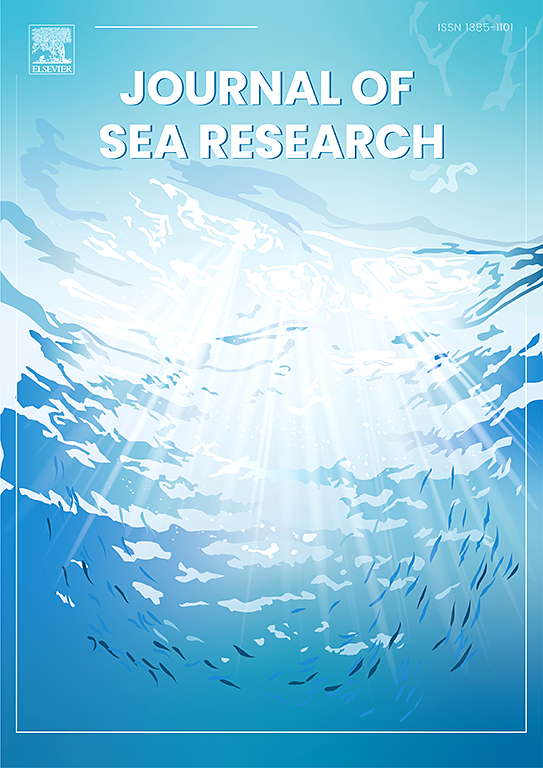Artificial tidepools promote marine diversity on Dutch sea-dikes
IF 2.9
4区 地球科学
Q2 MARINE & FRESHWATER BIOLOGY
引用次数: 0
Abstract
Marine construction homogenise coastal ecosystems by replacing a diverse array of shoreline habitats with artificial hard structures, such as seawalls and jetties. Climate adaptation will further increase shoreline hardening, posing an additional threat to coastal biodiversity. We therefore addressed the urgent need for practically oriented research on how to best promote marine biodiversity on different types of artificial substrates by testing the effects of enriching a Dutch sea-dike with artificial tidepools. For three years we monitored the development of different functional groups of sessile organisms on three different types of tidepools that were added in six clusters to the existing boulder base of a sea-dike. The artificial tidepools developed diverse sessile communities that included the common groups barnacles, green algae, bladderwrack, mussels and oysters; but also unique species groups, such as anemones, hydroids, red algae and colonial diatoms, that were otherwise absent or very rare on the sea-dike. Consequently, after three years, the taxonomic diversity of benthic organisms were 50 % higher in the artificial tidepools than on comparable rock habitats on the sea-dike, and the tidepool communities were more different from each other than from the other habitats on the dike. We demonstrate that artificial tidepools can play an important role in management interventions to increase habitat heterogeneity and bolster marine biodiversity on artificial substrates.
人工潮汐池促进了荷兰海堤上的海洋多样性
海洋建设通过用人工硬结构(如海堤和码头)取代各种海岸线栖息地,使沿海生态系统同质化。气候适应将进一步加剧海岸线硬化,对沿海生物多样性构成额外威胁。因此,我们迫切需要以实践为导向的研究,通过测试用人工潮汐池充实荷兰海堤的效果,来最好地促进不同类型人工基质上的海洋生物多样性。三年来,我们在三种不同类型的潮池上监测了不同功能群的无根生物的发展,这些潮池被分成六组添加到现有的海堤巨石基座上。人工潮池形成了多种无根群落,包括常见的藤壶、绿藻、囊藻、贻贝和牡蛎;但也有独特的物种群,如海葵、水螅、红藻和殖民地硅藻,这些在海堤上是不存在的或非常罕见的。结果表明,3年后,人工潮池中底栖生物的分类多样性比类似的海堤岩石生境高50%,潮池群落之间的差异比海堤其他生境之间的差异更大。我们证明了人工潮池可以在管理干预中发挥重要作用,以增加生境异质性和增强人工基质上的海洋生物多样性。
本文章由计算机程序翻译,如有差异,请以英文原文为准。
求助全文
约1分钟内获得全文
求助全文
来源期刊

Journal of Sea Research
地学-海洋学
CiteScore
3.20
自引率
5.00%
发文量
86
审稿时长
6-12 weeks
期刊介绍:
The Journal of Sea Research is an international and multidisciplinary periodical on marine research, with an emphasis on the functioning of marine ecosystems in coastal and shelf seas, including intertidal, estuarine and brackish environments. As several subdisciplines add to this aim, manuscripts are welcome from the fields of marine biology, marine chemistry, marine sedimentology and physical oceanography, provided they add to the understanding of ecosystem processes.
 求助内容:
求助内容: 应助结果提醒方式:
应助结果提醒方式:


